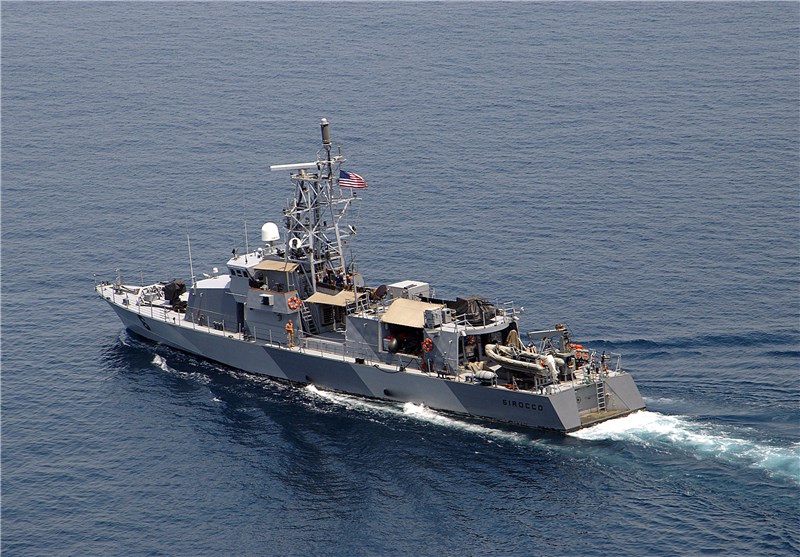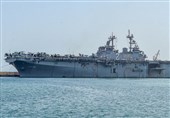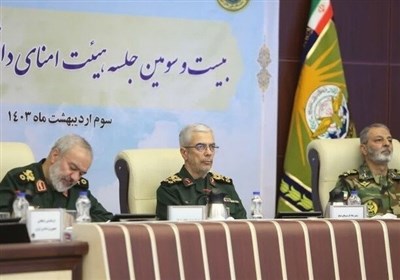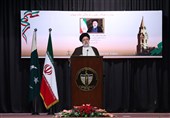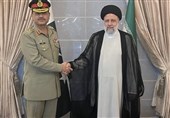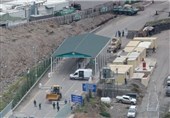Pentagon Sends Ships through Taiwan Strait for Third Time in Three Months
TEHRAN (Tasnim) – The Pentagon has sent ships through the Taiwan Strait — the third time in as many months — as Washington ramps up naval activities in the waterway, stoking fears in Beijing of a growing alignment with Taipei.
The move, likely to be interpreted by China as implicit support for self-ruled Taiwan, saw the US send the Yokosuka, Kanagawa Prefecture-based USS Curtis Wilbur destroyer and the US Coast Guard cutter Bertholf through the strait on Sunday and Monday, a US 7th Fleet spokesman said, the Japan Times reported.
The two vessels “conducted a routine Taiwan Strait transit Mar. 24-25 … in accordance with international law,” spokesman Lt. Joe Keiley said. “The ships’ transit through the Taiwan Strait demonstrates the US commitment to a free and open Indo-Pacific. The US will continue to fly, sail and operate anywhere international law allows.”
The dispatch, which comes amid military and trade tensions between Beijing and Washington, is the third such sailing since Jan. 24, when the guided-missile destroyer USS McCampbell, which is also based in Yokosuka, and the USNS Walter S. Diehl conducted what the US Navy also called “a routine” Taiwan Strait transit. On Feb. 26-27, the US Navy also sailed the USS Stethem destroyer and the cargo and ammunition ship USNS Cesar Chavez through the waterway.
But this week’s mission was unusual, experts said, in that it was believed to be the first one involving a coast guard vessel.
Lyle Morris, a senior policy analyst focusing on China, called the dispatch of the Bertholf “a bold move,” one going beyond mere port calls and traveling through nonsensitive areas.
“For one, it signals a new level of interoperability between the USN and USCG,” he said, using the acronyms for the US Navy and coast guard. “It signals a willingness to send a cutter for sensitive national security missions. It doesn’t get much more sensitive than the Taiwan Strait.”
Morris said the Bertholf, which left California on Jan. 20 for a monthslong mission in support the US Indo-Pacific Command, is doing new and unique things with its first deployment to the region.
“It’s also making a statement to the Chinese to send a cutter to the strait,” he said. “It’s another way of showing China that the US is putting its money where its mouth is to advance the ‘Free and Open Indo-Pacific’ concept.”
The 180-km-wide Taiwan Strait separates communist China from self-governed and democratic Taiwan, which Beijing views as a renegade province that must be brought back into the fold — by force if necessary. Although the waterway is regarded as international waters, China has long been sensitive about the presence of US military forces there.
That presence has grown since last year, with the most recent operation being the sixth known transit in about seven months. The US Navy also sailed two ships through the strait in October and November — operations that were shadowed by multiple Chinese warships — and conducted a similar operation in July. Prior to that, the operations were believed to occur only about once a year.
The US has no formal ties with Taiwan but is bound by law to help it defend itself and is the island’s main source of arms. The Pentagon says Washington has sold Taipei more than $15 billion in weaponry since 2010. Recently, Taiwan has sought bolstered military assistance from the US, requesting improvements to its fleet of F-16 fighter jets. Beijing has warned Washington against further arms sales, the official Xinhua News Agency reported last week.
Beijing has called Taiwan “the most important and sensitive issue in China-US relations” and has bolstered its military presence near the island nation in recent months, sailing its sole operating aircraft carrier through the Taiwan Strait in January and March last year and holding large-scale “encirclement” exercises and bomber training throughout 2018.
In a report released in January, the US Defense Intelligence Agency noted that China continues to undertake ambitious steps to modernize and better equip its military — steps that are driven primarily by “Beijing’s longstanding interest to eventually compel Taiwan’s reunification with the mainland and deter any attempt by Taiwan to declare independence.”
“Beijing’s anticipation that foreign forces would intervene in a Taiwan scenario led the (People’s Liberation Army) to develop a range of systems to deter and deny foreign regional force projection,” the report added.
